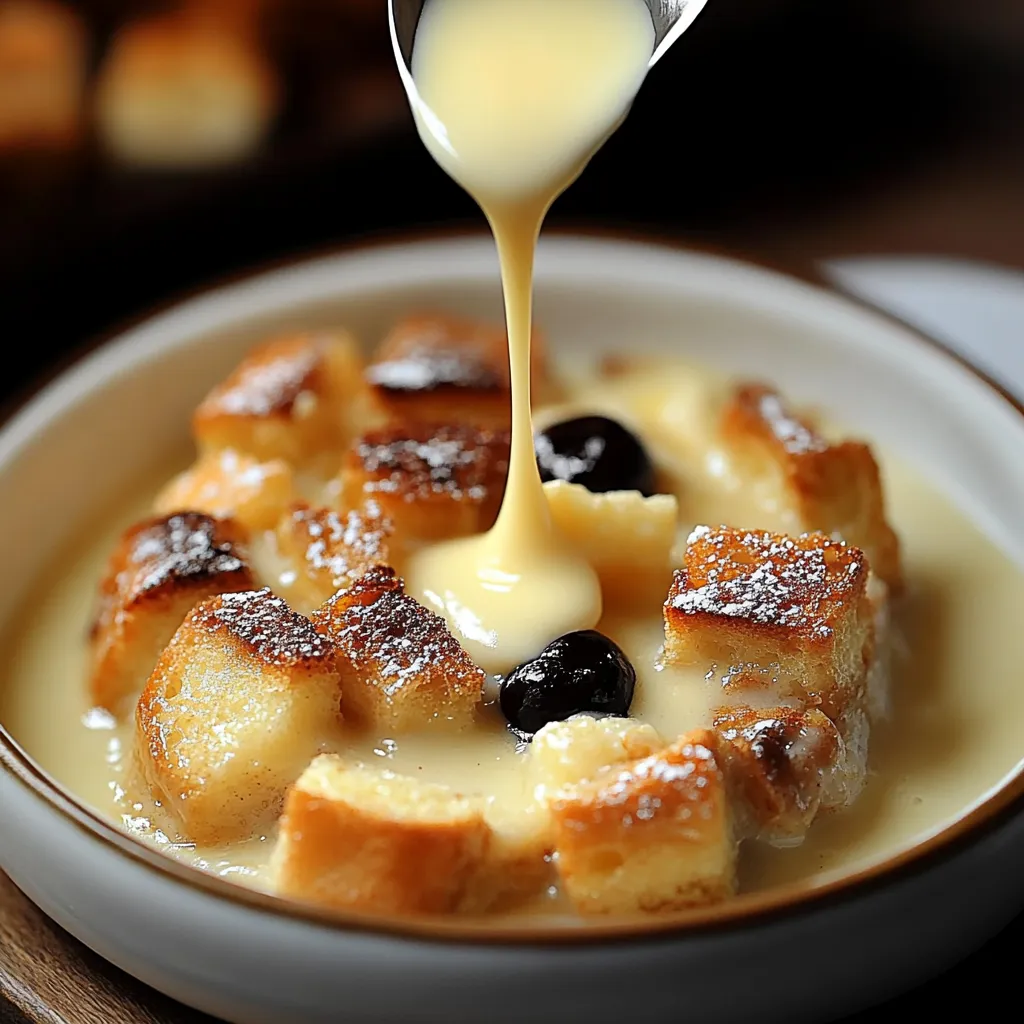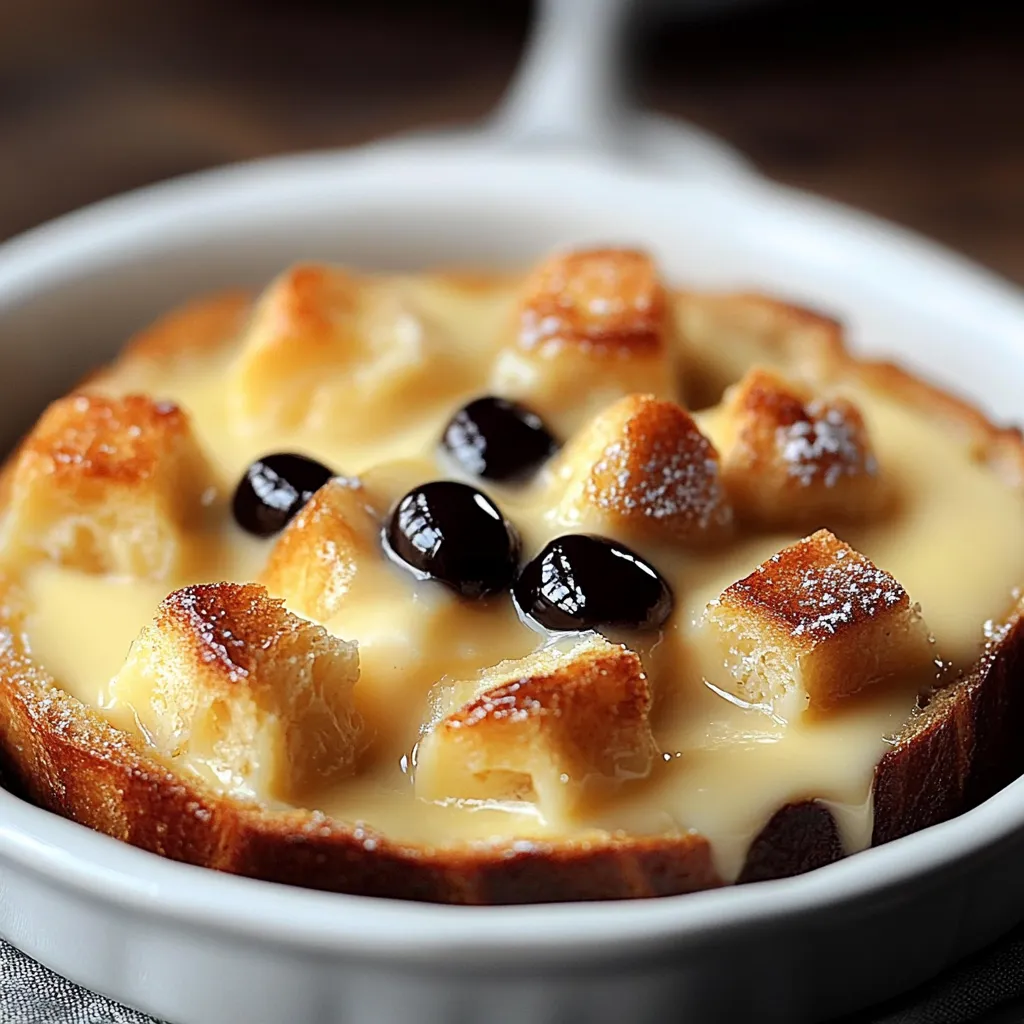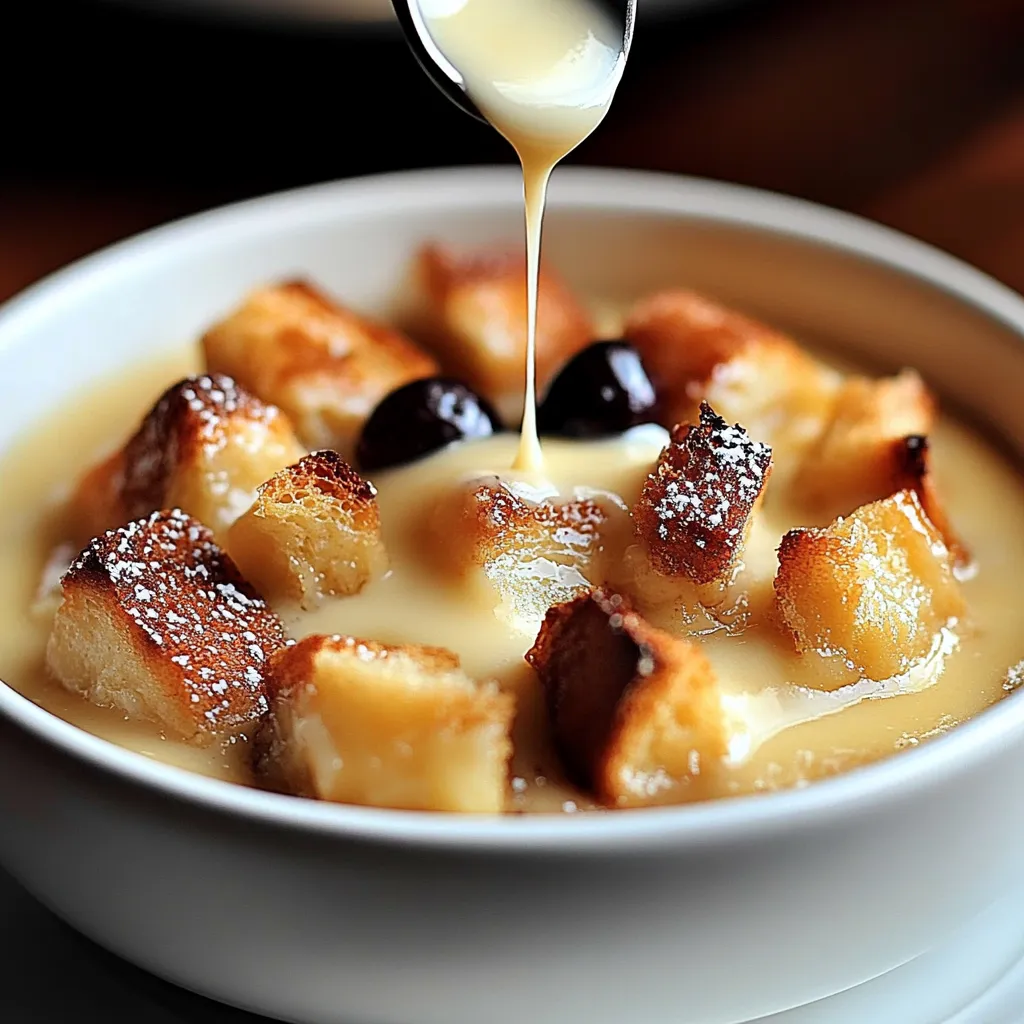 Pin it
Pin it
This homespun bread pudding turns ordinary leftover bread into a decadent treat that's both cozy and sophisticated. Its warm spices and smooth consistency make it a fantastic way to finish any dinner, while the vanilla topping takes it to another level entirely.
I whipped up this bread pudding when trying to use up some stale French bread after hosting friends. What began as just being practical has turned into our family's most asked-for sweet comfort food, particularly when the holidays roll around.
Ingredients
- Stale bread: Italian or French loaves work wonderfully. The dryness helps it soak up the custard while keeping its shape.
- Milk: Forms the custard foundation. Go for whole milk for the best richness.
- Heavy cream: Brings a wonderful decadence that makes this pudding stand out.
- Granulated sugar: Adds just enough sweetness without being too much.
- Eggs: Holds everything together and gives that ideal pudding texture.
- Vanilla extract: Always go with real extract for top-notch flavor.
- Ground cinnamon: Brings warmth and complexity. Freshly ground makes all the difference.
Simple Directions
- Get Everything Ready:
- Set your oven to 350°F. This temp lets your pudding cook through without burning the edges. Butter your baking dish thoroughly, making sure to cover all the corners so nothing sticks. A 9x9 dish works great for this.
- Mix Your Liquid Base:
- In a big bowl, stir together your milk, heavy cream, sugar, eggs, vanilla extract, and cinnamon. Mix well until everything looks smooth and the eggs are totally blended in. This makes the rich custard that'll transform your bread completely.
- Prep Your Bread:
- Toss your bread cubes gently into the liquid mix. Use a rubber spatula so every piece gets coated properly. Let everything sit for about 15 minutes, pushing the bread down now and then to help it soak up the mixture. Don't skip this waiting time—it's key for getting the texture just right.
- Cook It Up:
- Dump everything into your buttered dish, spreading the bread out evenly. Bake for 45-50 minutes until the top turns a nice golden color and the middle is set but still moves slightly. If you stick a knife in the middle, it should come out mostly clean.
- Enjoy It Hot:
- Let it cool down for 10-15 minutes before digging in. This cooling time helps everything firm up while staying nice and warm. Pour the vanilla sauce on top just before eating for the best experience.
 Pin it
Pin it
Vanilla really steals the show in this recipe. I can still picture my grandma teaching me how to make this pudding, telling me that vanilla works like a backup singer who makes the lead vocalist sound better. She always put in a bit extra "for good luck," something I still do with every batch I make.
Choosing the Right Bread
The bread you pick really changes how your pudding turns out. French and Italian loaves are my favorites, but challah, brioche, or even bread with cinnamon and raisins make tasty versions too. The most important thing is using bread that's a bit stale. Fresh bread has too much moisture and will make your pudding too soggy. If you only have fresh bread, cut it into cubes and leave them out overnight or lightly toast them before using.
 Pin it
Pin it
Prepare It Early
This bread pudding works great for parties because you can get it ready ahead of time. Put the whole thing together up to 24 hours before you want to bake it, wrap it tight with plastic, and stick it in the fridge. When you're ready to cook, let it sit out for half an hour before putting it in the oven. You might need to add 5-10 more minutes to the cooking time if it's still cold. Or you can bake the whole pudding earlier, let it cool down, and warm up single servings in the microwave for 30-45 seconds when you want to eat.
Change It Up With The Seasons
While the basic version tastes amazing on its own, you can switch things up based on the time of year. In autumn, throw in some chopped apples and more cinnamon. During winter holidays, add dried cranberries and orange peel. Springtime calls for lemon zest and fresh berries, and summer works well with peaches and a touch of nutmeg. The custard base stays the same, so you can try loads of creative ideas while keeping what makes the original so comforting.
Frequently Asked Questions
- → What kind of bread should I use?
Go for day-old French or Italian bread—it soaks up the custard without falling apart.
- → Can I swap out the milk or cream?
Sure, you can try reduced-fat milk or opt for half-and-half instead of heavy cream. The texture might change slightly, though.
- → How can I tell if it's ready in the oven?
When the top is golden and a knife inserted into the center pulls out clean, you're good to go.
- → Can I prep this ahead of time?
Yes! Mix everything, stick it in the fridge for a bit, and bake it fresh when you're ready for the best texture.
- → Is it okay to throw in extra flavors?
Definitely! Mix in raisins, chocolate chips, or dried cranberries to give it your own twist.
